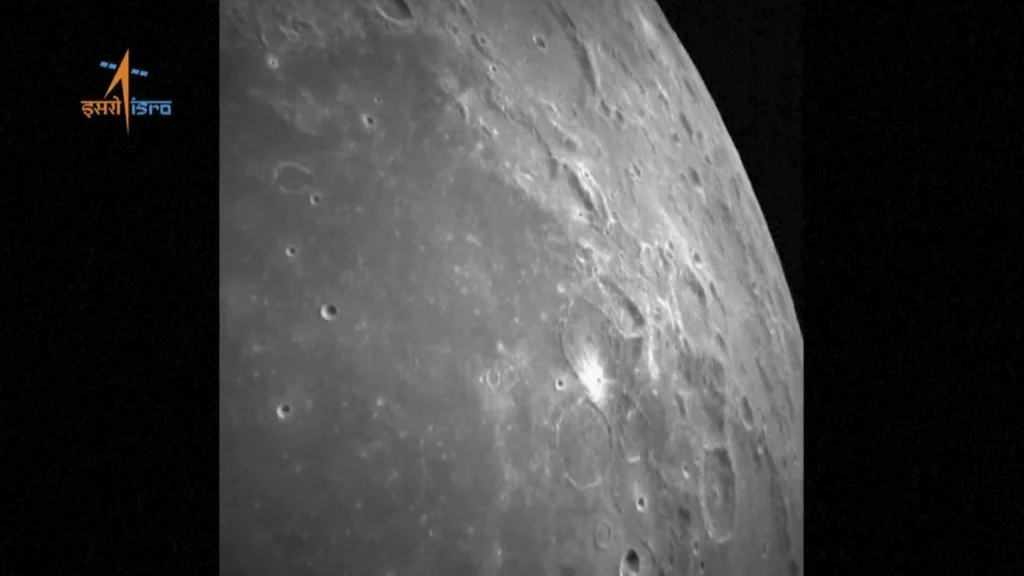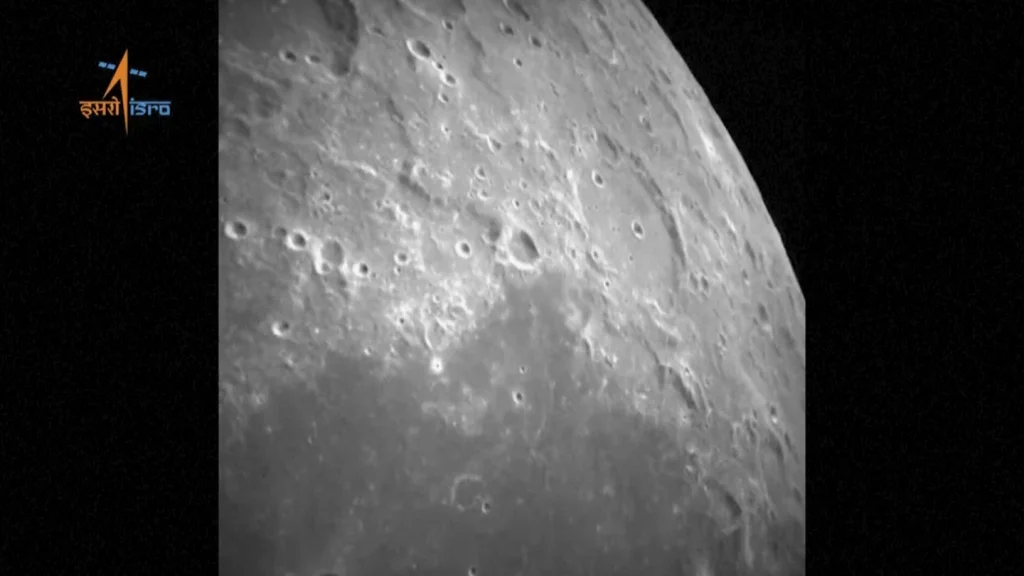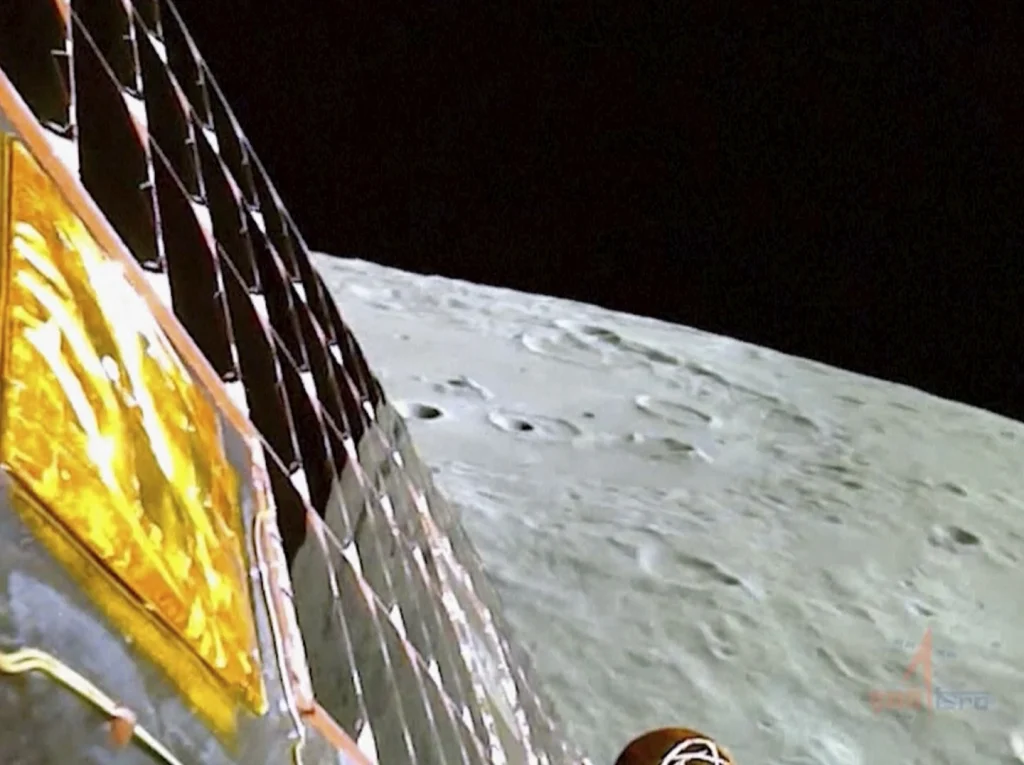India’s space agency, the Indian Space Research Organization (ISRO), announced on Tuesday that the country’s moon rover has made significant discoveries near the lunar south pole.
Following its historic moon landing nearly a week ago, the rover has successfully confirmed the presence of sulfur and identified several other elements through its laser-induced spectroscope instrument.
The detected elements include aluminum, iron, calcium, chromium, titanium, manganese, oxygen, and silicon.
These findings provide valuable insights into the composition of the lunar surface. The rover, named Chandrayan-3, descended from the lander of India’s spacecraft and is expected to carry out a series of experiments over a period of 14 days, as stated by the ISRO.
This remarkable mission marks a significant milestone for India’s space exploration endeavors and contributes to our collective understanding of the moon’s geological characteristics.
The recent findings from the rover have provided a significant breakthrough in our understanding of the lunar surface.
The Indian Space Research Organisation (ISRO) has announced that the rover has unambiguously confirmed the presence of sulfur, marking a crucial discovery in lunar geology.
This finding not only sheds light on the composition of the moon’s surface but also holds promising implications for future astronaut missions.

In addition to sulfur, the rover is tirelessly searching for signs of frozen water, which could serve as a potential source of drinking water for future astronauts or be utilized in the production of rocket fuel.
This quest for water on the moon is of utmost importance as it could potentially revolutionize our ability to sustain long-duration missions and establish a permanent human presence on the lunar surface.
The potential benefits of finding water on the moon are immense, ranging from supporting human life to facilitating the exploration and utilization of space resources.
With each new discovery, we inch closer to unlocking the mysteries of the moon and paving the way for future space exploration endeavors.
The exploration of celestial bodies has always been a subject of great interest and fascination for scientists and researchers.
In this regard, the Indian Space Research Organisation (ISRO) has recently announced its plans to send a rover to the moon with the aim of studying its atmosphere and seismic activity.
This ambitious mission, led by ISRO Chairman S. Somnath, marks a significant milestone in India’s space exploration program.
By studying the moon’s atmosphere, scientists hope to gain valuable insights into its composition and understand its evolution over time.
Moreover, the investigation of seismic activity on the moon will provide crucial data to enhance our understanding of the moon’s geological processes and its potential for future human exploration.
This mission represents a remarkable opportunity for India to contribute to the global scientific community and further expand our knowledge of the moon’s mysteries.
With its advanced technology and expertise, ISRO is well-equipped to carry out this challenging endeavor, and the scientific community eagerly awaits the invaluable discoveries that this mission will undoubtedly bring.
On Monday, a significant development occurred in the mission of the rover as its designated route was reprogrammed due to its proximity to a sizable crater measuring 4 meters in width (equivalent to 13 feet).
The Indian Space Research Organisation (ISRO) promptly announced that the rover is now safely navigating along a new path.
This cautious adjustment in the rover’s trajectory is a deliberate measure taken to ensure the vehicle’s well-being, as it moves at a deliberately slow pace of approximately 10 centimeters (equivalent to 4 inches) per second.
The intention behind this methodical approach is to minimize any potential shock or damage that could arise from traversing the moon’s rugged and uneven terrain.
This recent accomplishment by India is especially noteworthy considering the country’s previous unsuccessful attempt to land on the moon in 2019.

With this latest triumph, India has now joined an elite group of nations, which includes the United States, the Soviet Union, and China, as the only four countries to have achieved this remarkable milestone.
The significance of this achievement cannot be overstated, as it represents a testament to India’s commitment to pushing the boundaries of scientific exploration and technological advancement in the realm of space exploration.
This momentous feat not only showcases India’s growing prowess in the field of space exploration but also serves as an inspiration for aspiring scientists and engineers around the world.
As the rover continues its mission on the moon’s surface, the world eagerly anticipates the valuable insights and discoveries it will undoubtedly contribute to our understanding of the lunar landscape and beyond.
The successful mission undertaken by India not only signifies a remarkable achievement in the field of technology and space exploration but also serves as a testament to the country’s burgeoning status as a powerhouse in these domains.
This significant accomplishment aligns perfectly with the image that Prime Minister Narendra Modi is diligently attempting to project to the world – that of an ascendant nation confidently asserting its rightful place among the global elite.
The successful execution of this mission not only showcases India’s technological prowess but also highlights its capabilities and potential on the global stage.
With each successful endeavor, India’s reputation as a formidable player in the realm of technology and space continues to grow, bolstering its position as a force to be reckoned with.
This achievement serves as a source of immense pride for the nation, instilling a sense of confidence and optimism in its citizens.
The mission’s success also acts as a catalyst for further advancements and breakthroughs in the field, inspiring the next generation of scientists and engineers to push the boundaries of what is possible.
As India continues to make strides in the technological and space sectors, it solidifies its position as a key player in shaping the future of these industries, further cementing its rising standing among the global elite.
The commencement of the mission, which had been meticulously planned and prepared for over a month, was accompanied by a hefty price tag of approximately $75 million.
India’s triumphant achievement in reaching the lunar expanse came mere days after Russia’s Luna-25, which had set its sights on the same lunar region, encountered a catastrophic turn of events, leading to an uncontrollable orbit and a devastating crash.
This ill-fated incident would have marked Russia’s long-awaited return to successful lunar landings, a remarkable feat that had eluded them for a staggering span of 47 years.
The head of Russia’s state-controlled space corporation, Roscosmos, attributed this unfortunate outcome to a glaring lack of expertise resulting from the extended hiatus in lunar exploration that ensued following the last Soviet mission to the moon in 1976.
With a history spanning over half a century, India has emerged as a prominent player in the realm of space exploration.
Since the 1960s, the Indian Space Research Organisation (ISRO) has been at the forefront of numerous groundbreaking endeavors, catapulting the nation into the league of spacefaring nations.
Notably, India has not only launched satellites for its own purposes but has also extended its expertise to assist other countries in their space endeavors.
One of the most significant milestones for India came in 2014 when it achieved a momentous feat by successfully placing its Mars Orbiter Mission, also known as Mangalyaan, into orbit around the red planet.

This remarkable achievement not only showcased India’s technological prowess but also established it as the first Asian nation to achieve such a mission on its maiden attempt.
Building on this success, India is now setting its sights on a new and ambitious mission: its first-ever venture to the International Space Station (ISS).
In a testament to international collaboration and cooperation, India is partnering with the United States to realize this momentous endeavor.
This forthcoming mission, scheduled for the following year, holds immense promise for both nations, as it not only signifies India’s growing capabilities in space exploration but also signifies a strengthening partnership between India and the United States in the realm of scientific and technological advancement.
As India continues to make strides in the field of space exploration, it is poised to contribute significantly to the global scientific community and further enhance its position as a leading nation in the realm of space exploration.
